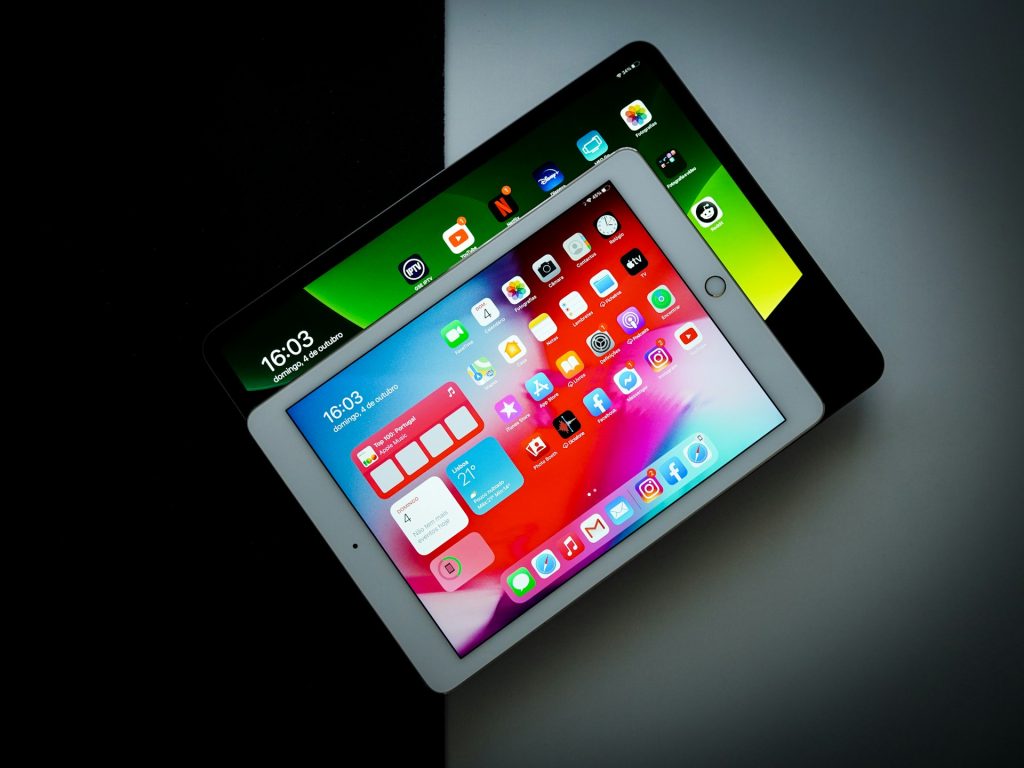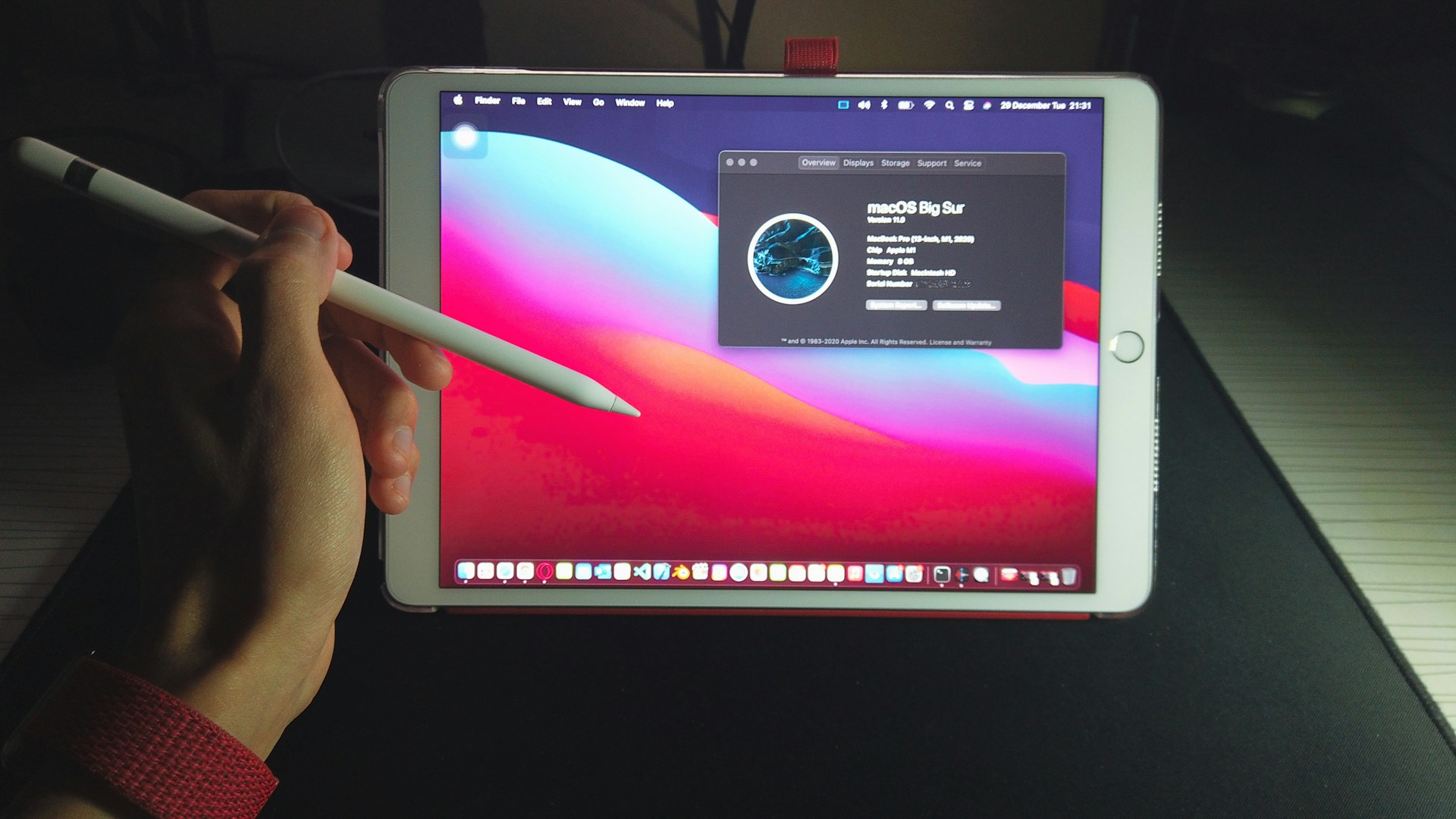The iPad Air, a versatile powerhouse, is about to get even better in 2024 with two new models, each catering to different needs. The 11″ version will come equipped with a 7,607 mAh battery, while a larger, brand-new 12.9″ model will boast a 10,758 mAh battery.
These enhanced capacities are specifically designed to support longer use times, a leap further enriched by the integration of power-efficient components like the Apple M2 chip and advanced connectivity features.
This article offers more flexibility and longer screen time without constant recharges. Alongside these advancements, knowing how to maintain and extend your iPad Air’s battery life is still crucial. Whether you’re a heavy user or just enjoy the occasional browse, there are simple yet effective strategies to ensure your device’s battery remains robust, keeping you powered through your digital day without a hitch.
13 Settings That Can Increase Your iPad Battery Life Last Longer

1- Minimize Power Consumption by Managing High-Drain Apps
To extend your iPad Air’s battery life, keep an eye on apps that drain the battery by going to Settings > Battery, where you’ll see which ones use the most power. Consider removing seldom-used apps or adjusting settings for necessary ones to limit background activity and push notifications.
For apps using GPS, tweak their location access to ‘While Using the App‘ via Settings > Privacy > Location Services. This saves battery and improves privacy, ensuring your iPad stays powered up for what you need it for.
2- Activate Low Power Mode
This feature temporarily reduces background activity and adjusts system settings to prolong your battery’s endurance. While the iPad doesn’t natively offer a “Low Power Mode” like iOS, you can mimic its effects through several adjustments.
To manually replicate Low Power Mode on your iPad Air, you can:
- Dim your screen brightness: Lowering the screen brightness reduces power consumption significantly. Adjust this in Settings > Display & Brightness.
- Reduce auto-lock time: Setting your iPad to lock more quickly can save battery. Change this by going to Settings > Display & Brightness > Auto-Lock and selecting a shorter time.
- Disable background app refresh: This stops apps from updating content in the background, which can drain the battery. Please turn it off in Settings > General > Background App Refresh.
- Turn off push email: If you receive a lot of emails, consider changing your email settings from push to fetch. Find this option under Settings > Mail > Accounts > Fetch New Data, and select manually or at longer fetch intervals.
3- Turn Off Location Services for Apps
To save battery on your iPad Air, turn off location services for apps that don’t need it. Go to Settings > Privacy > Location Services, and you’ll see a list of your apps. For each one, think about if it needs to know where you are to work well.
If not, you can choose “Never” or “While Using the App” to stop it from always checking your location, which uses up a lot of battery. Also, under System Services at the bottom of that page, you can turn off things like “Location-Based Apple Ads” to save even more battery. This way, your iPad Air keeps its charge longer, and you also keep your location more private.
4- Turn off Bluetooth and Wi-fi
Consider turning off Wi-Fi and Bluetooth when you’re not actively using them. It’s like giving your iPad a rest from constantly looking for Wi-Fi networks or Bluetooth devices to connect with, which can surprisingly eat up a lot of power. Just pop into the Settings, tap Wi-Fi, and flick the switch to off. Do the same under the Bluetooth menu.
It’s a simple trick, but it can stretch your battery life a bit further, especially when you’re out and about, and every bit of battery life counts. Plus, it’s easy to switch them back on whenever you need to hop online or connect to your favorite accessories.
Here’s how to turn them off simply:
- For Wi-Fi, go to Settings > Wi-Fi, and slide the toggle to off.
- For Bluetooth, head to Settings > Bluetooth, and do the same.
5- Use Dark Mode
Turning on Dark Mode on your iPad Air is a smart move for saving battery and it’s pretty easy to do. Just head to Settings, tap on Display & Brightness, and then choose Dark. You can even set it to turn on automatically when the sun goes down, which is perfect for easing into those evening hours without straining your eyes. it gives your iPad a sleek look while helping the battery last a bit longer. Give it a shot; it’s a simple switch with a nice perk.
6- Turning off automatic photo uploads to iCloud
Turning off automatic photo uploads to iCloud can also help save your iPad Air’s battery life. This feature syncs your photos across all your devices by uploading them to iCloud whenever you’re connected to Wi-Fi, but it can be a real drain on your battery.
To switch this off, go to Settings > Photos, and then turn off iCloud Photos. This stops your device from automatically sending your photos to iCloud, which can save a lot of battery, especially if you take a lot of pictures or videos. If you worry about losing your photos, you can manually upload them to iCloud or back them up to a computer when it’s convenient for you, preserving your battery for when you need it.
7- Activate Airplane Mode in Weak Network Areas
If you find yourself in an area with poor signal, switching your iPad Air to Airplane Mode can save a lot of battery. When your iPad is trying hard to find and maintain a weak signal, it uses up more power. By turning on Airplane Mode, you stop this search and save battery.
To activate Airplane Mode, swipe down from the top right corner of the screen to access the Control Center, and tap the airplane icon. You can also go to Settings and toggle on Airplane Mode there. this will disconnect you from cellular networks, Wi-Fi, and Bluetooth, but you can individually turn Wi-Fi and Bluetooth back on if needed, even while in Airplane Mode.
8- Update Latest iPad OS Version
Keeping your iPad Air up to date is like giving it a regular health check-up. Apple releases updates for iPadOS that do more than just add new bells and whistles; they often tweak the system to run smoother and use less battery.
To make sure your iPad is running at its best, head over to Settings, tap on General, and then Software Update to see if there’s a new version waiting. If there is, go ahead and update it while you’re connected to Wi-Fi and your iPad is charged or plugged in.
9- Restar iPad Once in a Week
Restarting your iPad Air is like giving it a mini vacation once a week. It’s a chance for it to kick back, relax, and shake off any digital cobwebs. Think of it as pressing a magic refresh button that helps fix hidden hiccups and stops those invisible energy hogs in their tracks.
Here’s how: just press and hold the top or volume button until you see the “slide to power off” option. Let your iPad take a quick nap by sliding that off. Then, wake it up by pressing the top button until you see the Apple logo. This easy habit can keep your iPad feeling fresh and running more efficiently, ensuring it’s always ready for your next adventure, without clinging to the charger.
10- Remove the iPad Air Case while Charging
Taking the case off your iPad Air while it charges helps keep it cool. Charging makes your iPad warm, and a case can trap that heat, which isn’t good for the battery over time. Without the case, the heat can escape more easily, which helps your battery stay healthy longer and can even make charging a bit faster. So, when it’s time to charge, just pop the case off. It’s a small step, but it can make a big difference in how well your iPad works in the long run.
11 – Use Auto Brightness
This feature automatically adjusts your screen’s brightness based on the surrounding light levels, ensuring your screen is never brighter than it needs to be. Not only does this make reading or viewing more comfortable, but it also conserves battery life by avoiding unnecessary power use on screen lighting.
To turn on auto-brightness, head to Settings > Accessibility > Display & Text Size and scroll down to find the Auto-Brightness toggle. Switch it on, and your iPad will take care of the rest, seamlessly adapting your screen for optimal viewing and energy use, no matter where you are.
12- Check Battery Usage Regularly
Keeping an eye on your iPad Air’s battery usage is like checking how much gas is left in your car—it shows you what’s using up your battery the most. Just pop into the Settings app and tap on Battery. You’ll see a list of which apps have been drinking up your battery juice over the last day or week.
Sometimes, you might find surprises, like an app you hardly use eating up a lot of power or realizing how much streaming videos can drain your battery. You can close apps you’re not using, tweak your settings a bit, or change how you use your iPad to help your battery last longer. It’s a simple way to make sure your iPad is always ready when you need it, without having to charge it all the time.
13- Limited Use of Widgets Can save iPad Air Power
Limiting the use of widgets on your iPad Air can help conserve battery life. Widgets, while convenient for at-a-glance information like weather updates, calendar events, or news headlines, can also be a drain on your battery, especially if you have many of them running or if they update frequently.
To manage your widgets more efficiently, consider keeping only the ones you really need or use daily. You can remove unnecessary widgets by touching and holding the widget on your Home Screen or Today View, then tapping the “Remove Widget” option. This doesn’t mean you have to give up on widgets entirely—just choose the ones that offer you the most value and keep your setup streamlined.
Signs Your iPad Needs a Battery Replacement and How to Check Battery Health
As iPads age, their batteries degrade, which can affect overall performance and usability. Here are signs that it might be time to replace your iPad’s battery and steps you can take to assess its health yourself.
1. Diminished Battery Life
If your iPad’s battery doesn’t last as long as it used to, this could be a sign of degradation. You can check battery usage by going to Settings > Battery. This screen will show you the battery level and which apps are consuming the most power.
2. Slow Charging
A degraded battery may charge more slowly than usual, even with fast chargers. This is because the battery’s ability to hold a charge diminishes over time.
3. Unexpected Shutdowns
If your iPad shuts down unexpectedly, especially if it happens at varying charge levels (e.g., 50% one day, fully charged the next), this indicates battery issues. Overheating during use can also lead to shutdowns, as the device tries to protect its internal components.
Conclusion
To keep your iPad Air’s battery going strong, just remember a few easy tips: cut down on using apps that drain your battery, turn off extra settings like Bluetooth and Wi-Fi when you don’t need them, and use features like auto-brightness to help save power. Also, make sure to keep your iPad updated and check which apps are using the most battery. Doing these small things can help your battery last longer, so you can enjoy your iPad more without always needing to charge it.
FAQs
Limiting the use of apps that drain your battery is key. Apps that use a lot of data, location services, or run in the background can significantly reduce battery life. Adjust your screen brightness manually or enable auto-brightness, and turn off background app refresh for apps that don’t need constant updates. Managing these settings can substantially reduce battery drain.
Yes, updating your iPad Air is crucial for maintaining battery life. Apple continuously optimizes iOS to improve battery usage and fix bugs that may affect battery health. Regular updates ensure that your device runs efficiently, leveraging the latest battery-saving technologies and software optimizations.
Dark Mode can indeed help save battery, particularly on iPads with OLED or advanced displays, as these screens use less power to display darker colors. By reducing the need for bright, power-intensive colors, Dark Mode can extend your battery life, especially during evening use or in low-light environments.
Restarting your iPad Air clears its memory, stops unnecessary background processes, and resolves minor glitches that might be consuming extra power. This can refresh your device’s operations, ensuring that it runs more smoothly and efficiently, thus conserving battery life.
When not in use, turning off Bluetooth and Wi-Fi stops your iPad from searching for new connections or networks, a process that consumes battery power. If you’re not actively using these services, disabling them can help extend your battery life.
Charging your iPad with the case on can trap heat around the device, potentially harming the battery over time. Heat can degrade battery health, so removing the case allows for better heat dissipation during charging, keeping the battery in better condition.
Yes, many apps use location services in the background, constantly updating and using GPS, which can quickly drain your battery. By turning off location services or limiting them to only essential apps, you reduce this background activity, thereby saving battery life.
Auto-Brightness adjusts your screen’s brightness based on ambient light conditions, preventing the screen from being brighter than necessary. This automatic adjustment helps reduce power consumption, contributing to longer battery life.
Widgets update content in the background (like weather, news, and calendar events), which can drain battery life. By keeping only essential widgets and removing others, you minimize background data refreshes, thereby saving battery.
In areas with poor signal, your iPad Air may work harder to maintain a connection, draining the battery faster. Switching to Airplane Mode cuts off cellular, Wi-Fi, and Bluetooth searches, significantly reducing power consumption. You can selectively re-enable Wi-Fi and Bluetooth while in Airplane Mode.
The battery usage section in iPad Settings shows which apps and services have been consuming your battery over the last 24 hours or 10 days. This information can help you identify and adjust or uninstall high-drain apps, manage settings more effectively, and alter usage habits to conserve battery.
Regularly checking for iPadOS updates ensures that your device benefits from the latest efficiency improvements and bug fixes. Apple frequently releases updates that can enhance battery life and overall device performance. Aim to check for updates at least once a month.
































































